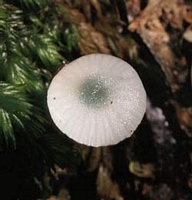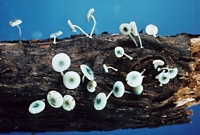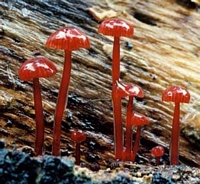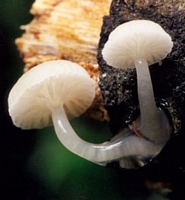Mycena interrupta
|
 | A small fungus with a brilliant blue or blue green cap which fades to a central blue or blue green disc. The stem is white with a tinge of the cap colour, above a hairy blue green disc at the base. The gills are white with blueish green edges. The fungus |  | |
|

|

|
Mycena ura
|
|

|

|
Mycena viscidocruenta
|
 | The cap is almost transluscent, dark red, shiny and sticky when fresh. The stem is also covered in a sticky transluscent layer above a disc of hairs that attach it to its substrate. It does not bleed when broken. The gills are pinkish-red with a darker ma |
|

|

|
Mycena austrororida
|
 | The cap is transluscent white with dots on the surface. The stem is central, transluscent and covered in a thick, slimy, translucent coat. The gills are white and are arched down the stem. Its favoured habitat is on fallen dead twigs and small branches of |
|

|

|